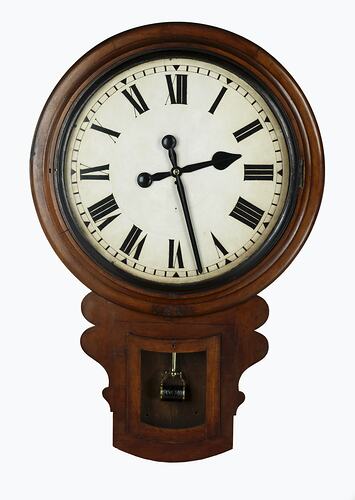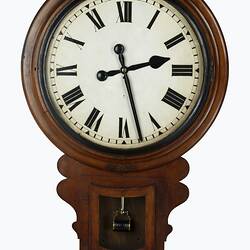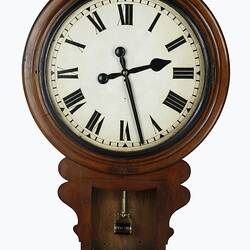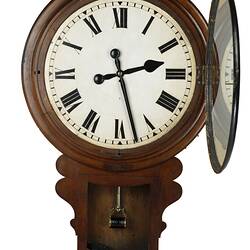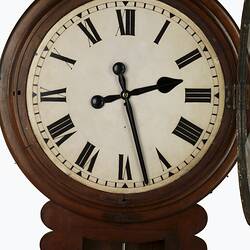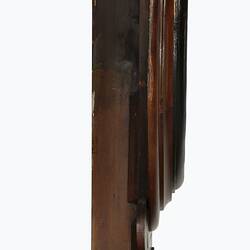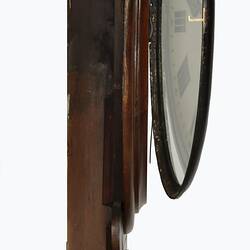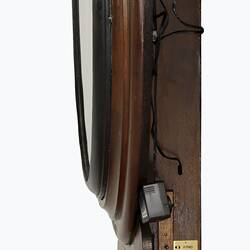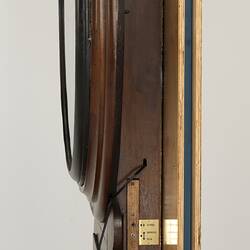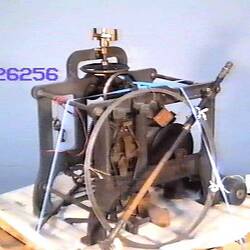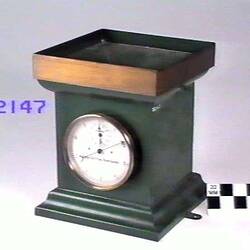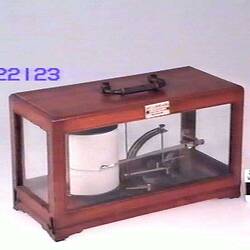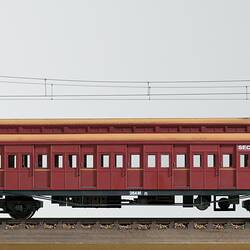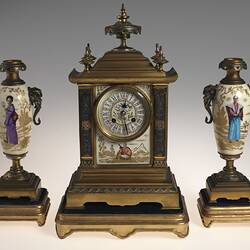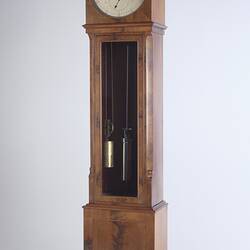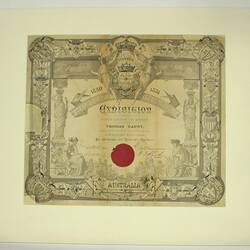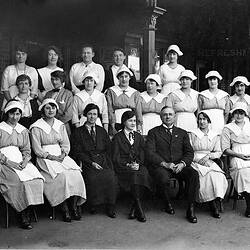Summary
Victorian Railways No 1 clock, also known as the 'Main Line Starter Clock', from Spencer Street Station, circa 1871.
Made by Thomas Gaunt & Co, Bourke Street, Melbourne. According to an article in the VR Newsletter (Feb 1964), this was the government-owned Victorian Railway Department's first clock and was installed at the former Spencer Railway Station (now Southern Cross Station) in 1858, where it hung for 79 years on the wall outside the Stationmaster's Office, until replaced by a more modern timepiece in 1937. It was known by railway staff as "the main line starter clock", being used to ensure that all country trains departed prompty according to the scheduled timetable.
The clock was later modified to be controlled by a telegraph signal from Melbourne Observatory, ensuring that it maintained accurate time, both for the operation of the railways and for the public. Government Astronomer Robert Ellery connected this clock and several other public clocks by telegraph line to the Melbourne Observatory's main precision regulator clock in 1871.
The Batman's Hill Station was established in 1859, and the station and railway line to Geelong acquired by the Victorian Government's Railway Department in 1860. Information provided by the Victorian Railways at the time of acquisition in 1964 suggested the clock was installed in 1859, althought it is possible that the clock dates from around the introduction of Observatory time in 1871.
Accurate time signals were transmitted to country and suburban train stations at 10 o'clock every morning. Train drivers and guards were required to check their watches at the closest station after 10 o'clock, and pass this accurate time onto smaller country stations lacking telegraph connection. In this way the entire railways network operated to a single time, ensuring safe operation of the system. Regional communities in Victoria in turn relied on 'railways time' to set their own clocks and watches.
When Spencer Street Station was demolished and rebuilt from 1960, for the introduction of the standard gauge interstate lines, the clock was removed and stored in the railways clock shop until transferred to the museum in 1964. At the time of its transfer its movement was described by museum staff as "a good example of the very high-grade horological craftsmanship which prevailed a century ago" (VR Newsletter, Feb 1964, p.18).
Physical Description
Large wall clock, cedar drop dial case, with glazed 3-ft (914 mm) diameter face, cast-iron bezel hinged at top, and cedar timber surround, approximately 4 ft (1219 mm) diameter externally. Weight driven; dead-beat escapement. Pendulum bob contains an electromagnet to enable electrical control from a distance. Electrical terminals on top of clock case. The clock was modified with the addition of a discrete electrical movement in 2016, to enable the clock to operate without winding.
More Information
-
Collecting Areas
-
Acquisition Information
Donation from Victorian Railways (VR), Mar 1964
-
Maker
T. Gaunt and Co., Royal Arcade, Bourke Street, Melbourne, Greater Melbourne, Victoria, Australia, circa 1858
-
User
Victorian Railways (VR), Spencer Street, Melbourne, Greater Melbourne, Victoria, Australia, circa 1859-1963
-
Inscriptions
On front of case below face: "V.R. No.1"
-
Classification
-
Category
-
Discipline
-
Type of item
-
Overall Dimensions
1190 mm (Width), 250 mm (Depth), 1820 mm (Height), 150 kg (Weight)
Clock weight is approximate. With approximately 3-ft (914 mm) diameter glazed face.
-
Keywords
